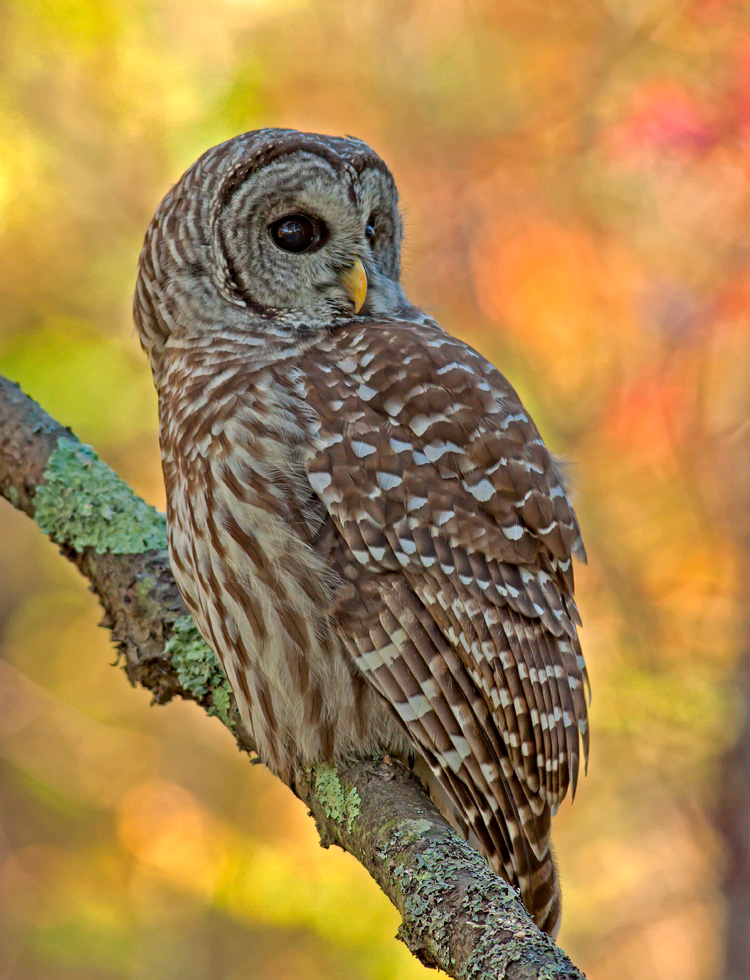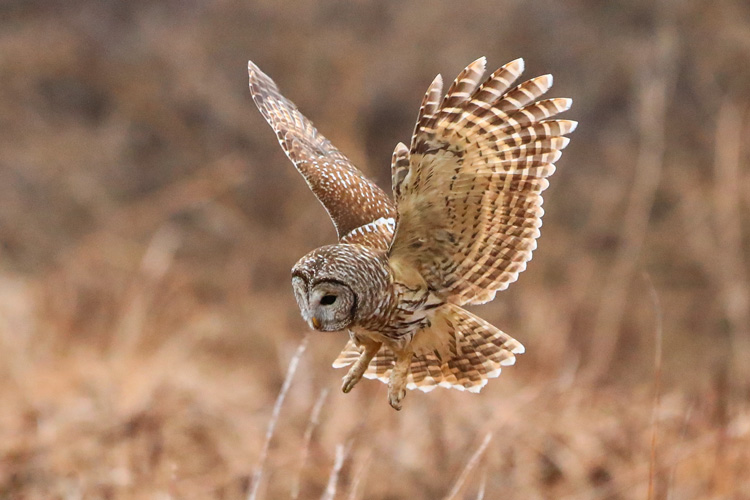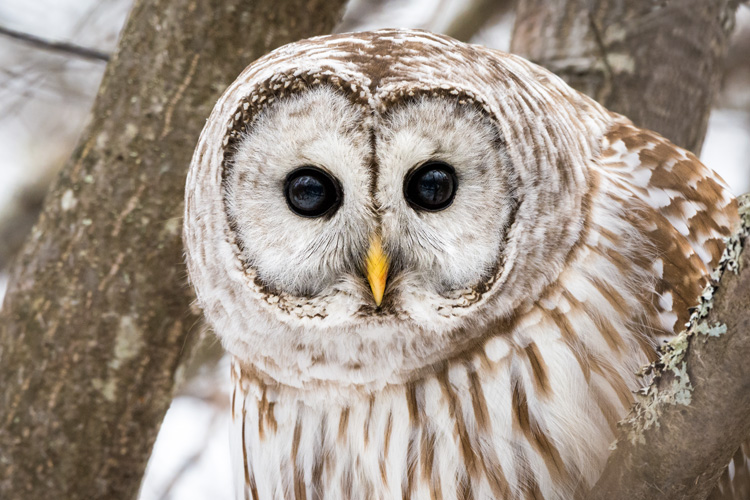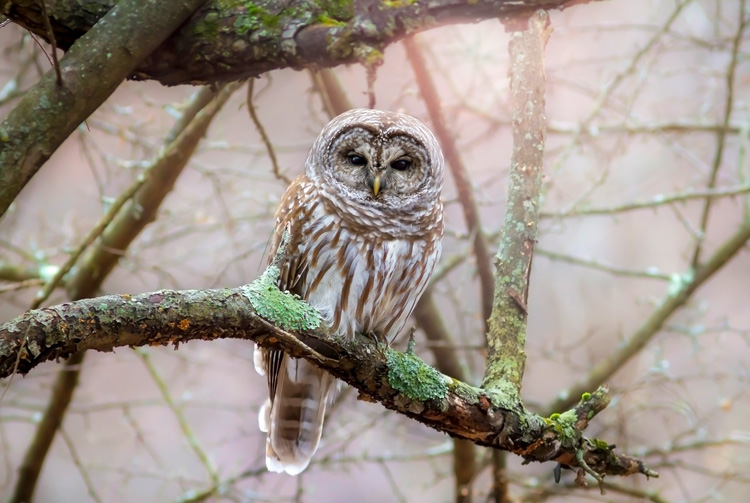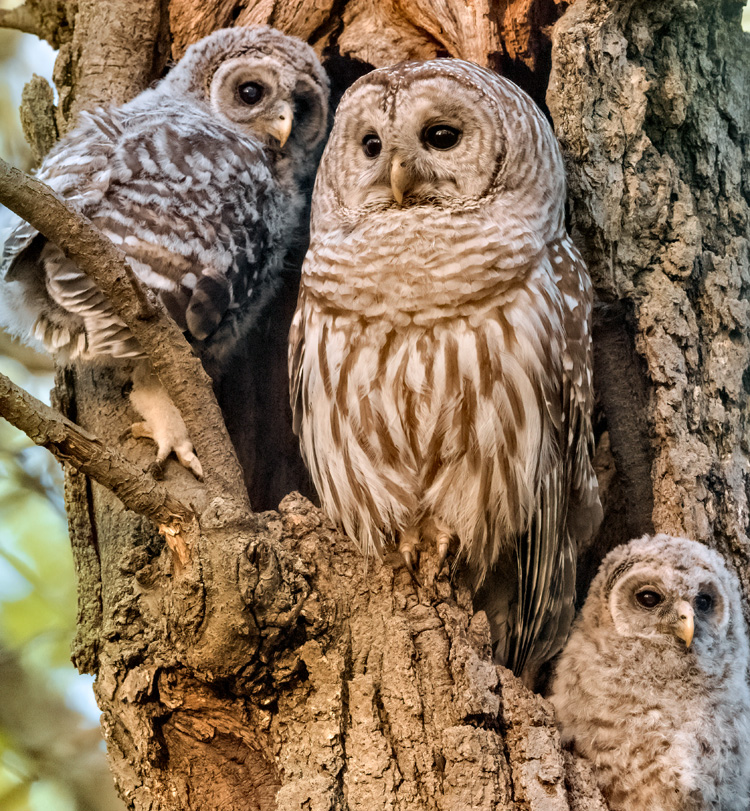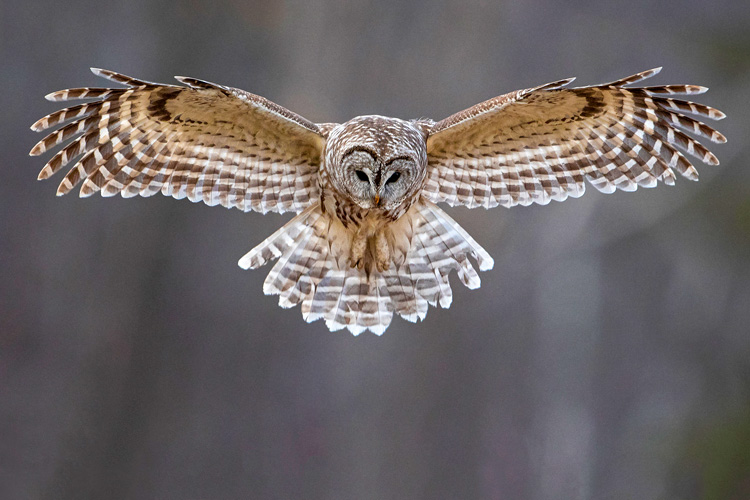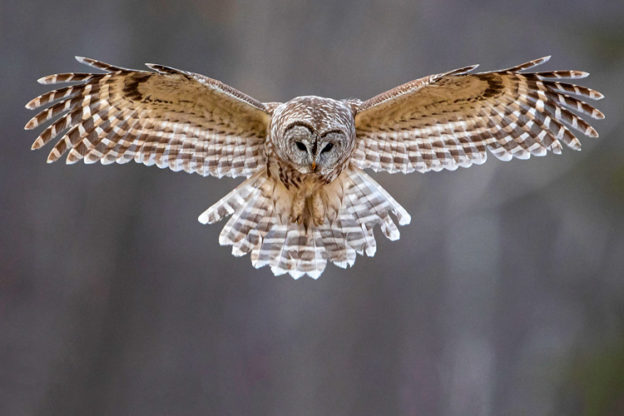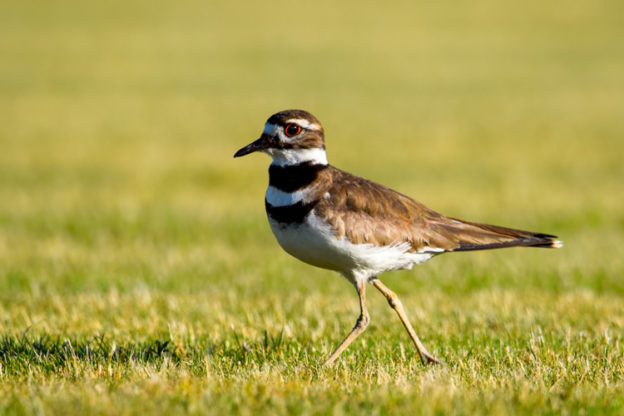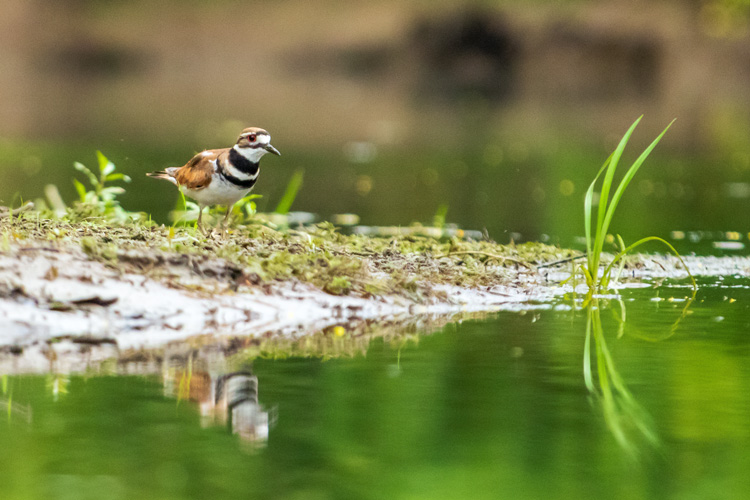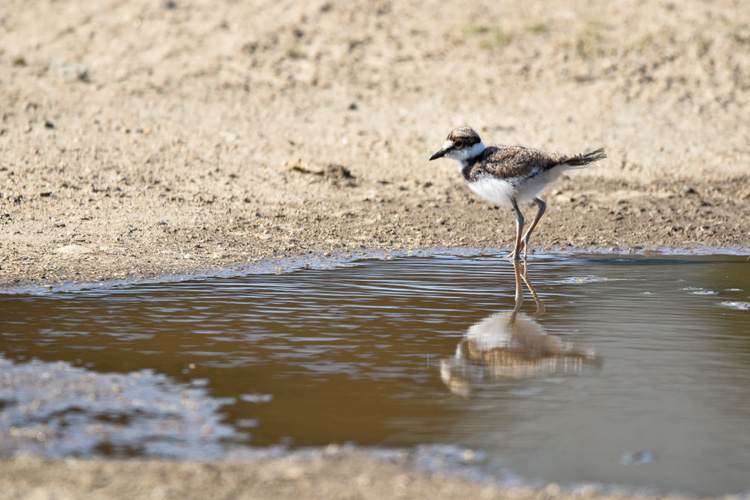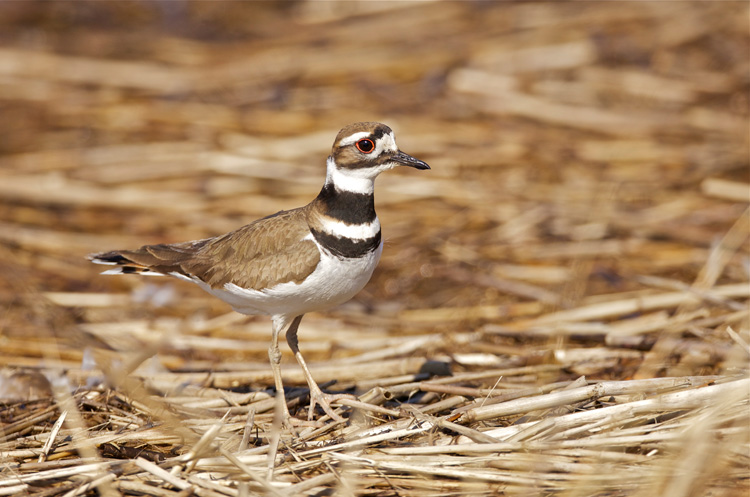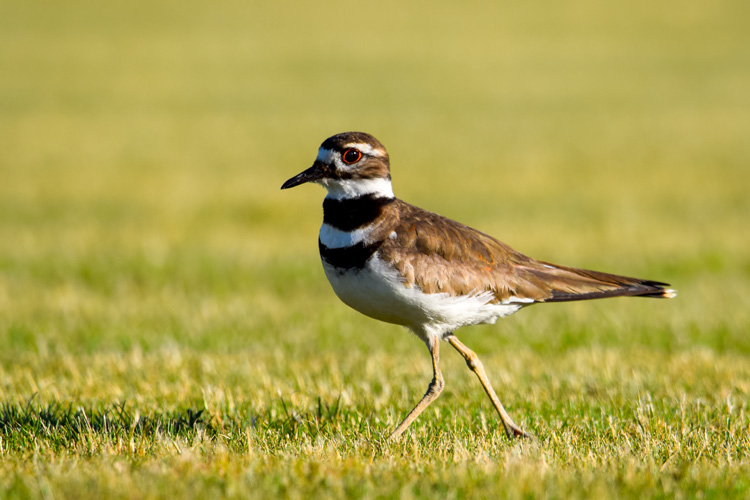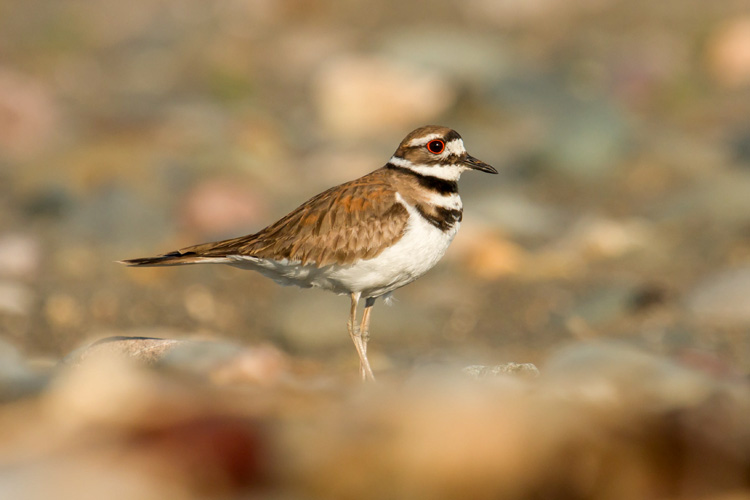“Solemnity is what they express—fit representatives of the night.”
—Henry David Thoreau
The shy but stocky Barred Owl does indeed cut a solemn figure, with its soulful, dark brown, almost black eyes and stripes of mottled brown and white crossing its body.
Many nighttime travelers in the New England woods have been asked, who cooks for you, who cooks for you all? by a Barred Owl. Its deep, resonant voice carries well in the moist, forested woodlands that the species prefers during the breeding season. They prefer natural tree cavities and human-made nest boxes for their nesting sites, preferably high enough up to avoid predators like weasels and raccoons.
Barred Owls are quiet and elusive, but since they don’t migrate at all, they don’t tend to move around all that much, generally adhering to a territory of no more than a few square miles their entire lives. Although their territories may sometimes overlap, Barred Owls do their best to avoid their cousins, Great Horned Owls—their greatest predator.
You can learn more about the Owls of Massachusetts on our website, report an owl sighting of your own, and enjoy five photos of these gorgeous raptors from our annual Picture This: Your Great Outdoors photo contest, below.
